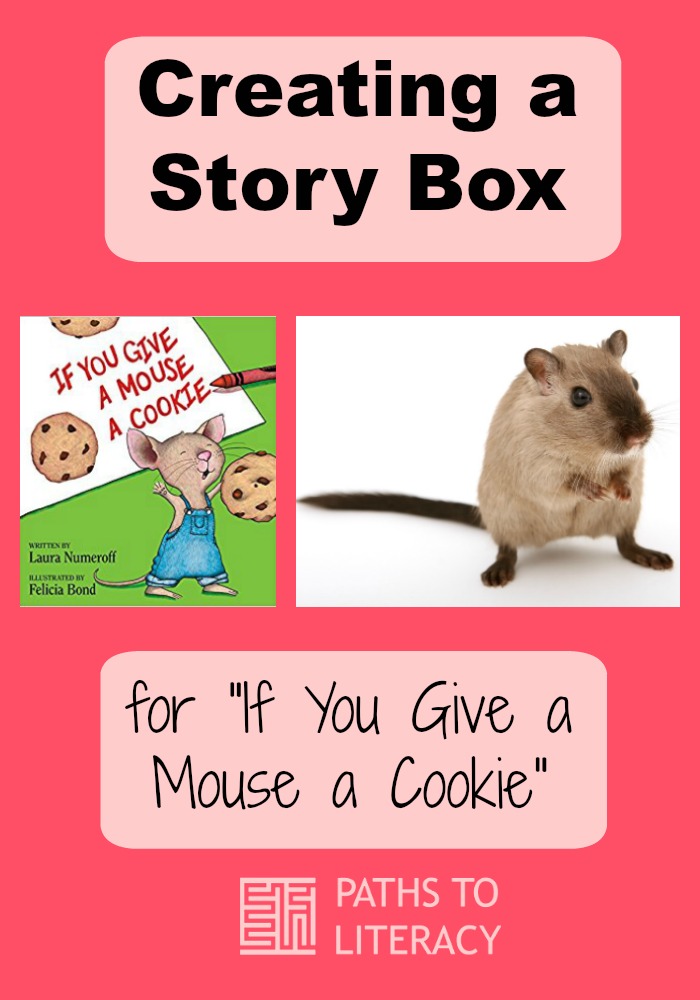Story Box for "If You Give a Mouse a Cookie"

As part of my Capstone Project for my master’s degree in Integrated Curriculum, from the American College of Education, I chose to create a story box for students with visual impairments. Story boxes enhance and differentiate the literacy process for students with visual impairments by using real objects to support and develop concepts in the story being read. This project makes “If You Give a Mouse a Cookie” by Laura Numeroff accessible to students with visual impairments through the use of a story box.
Creating Story Box
Explanation for the Selection of Tactile Objects
- Mouse
Mouse is the main character in the book. I would use a fuzzy, life-sized model of a mouse. It is important for concept development to use a mouse that actually looks and feels real, since, most likely, students who are visually impaired have little to no experiences with an actual mouse.
- Glass with a Straw
The mouse asks for a glass of milk and a straw. Some students may have had limited experience with a straw.
- Mustache
After drinking the milk, the mouse looks into the mirror and he may see a “milk” mustache. I would include a fake mustache in my story box for students to try on to build the concept of a mustache.
- Scotch Tape
The mouse wants to hang his picture on the refrigerator with Scotch tape. I would let students experiment with how to use a tape dispenser and hang a piece of paper.
Ideas for Implementation
Language Arts
- Discuss fiction versus non-fiction stories. Can a mouse talk? Can a mouse use a broom?
- Discuss If/Then and story sequencing. It may be helpful to allow the student to use the objects in this process.
Conclusion
It is so important that students with visual impairments build concepts to enhance literacy. Without vision, the student who is visually impaired needs to receive explicit and hands-on learning experiences. There are studies that suggest that the “brain processes images 60,000 times faster than it does text. And it’s more accustomed to processing images—ninety percent of the information sent to the brain is visual” (Pant, 2015). By using story boxes, the teacher is providing the student with three dimensional “pictures” to offer them with more information and context.

